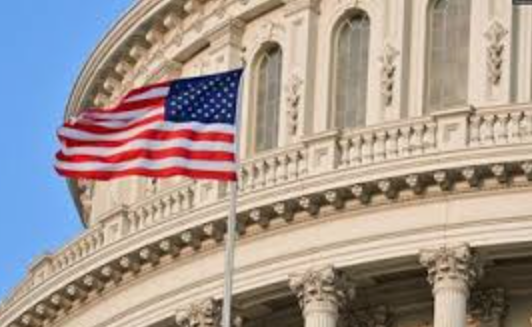US Senate passes law to end record-breaking shutdown: what happens next
11 November 07:36
After more than a month of government shutdown, the U.S. Senate has approved a compromise bill that would restore funding to federal agencies and end the longest government shutdown in the country’s history. This was reported by "Komersant Ukrainian" with reference to Reuters.
What happened
On Monday, November 10, the U.S. Senate passed a bill aimed at ending the government shutdown, which had lasted the longest in the history of the United States.
60 senators voted in favor of the document, 40 voted against. The initiative was supported by almost all Republicans and eight Democrats.
This compromise will allow
- restore funding for federal agencies, which expired on October 1;
- freeze Donald Trump’s campaign to reduce the government apparatus – there will be no layoffs until at least January 30, 2026;
- ensure that the government is open until the end of January, preventing new disruptions in payments and social programs.
The document has now been sent to the House of Representatives, where it could be approved as early as Wednesday, after which it will be sent to President Donald Trump for his signature. Trump himself has already called the deal “very good.”
What compromises had to be made
The Democrats tried to tie the renewal of funding to health insurance subsidies that are set to expire at the end of the year. They demanded guarantees that 24 million Americans would continue to receive assistance, but these conditions were not included in the final text.
Instead, senators agreed to return to the issue of these subsidies in December, although there is no guarantee of a vote.
How long will the new budget last?
The new bill provides funding for federal agencies until January 30, 2026, which temporarily unblocks the government’s work but does not solve the deficit problem.
In total, the government will continue to increase its debt by $1.8 trillion annually, which has already reached $38 trillion.
Market and public reaction
The news of the breakthrough in the negotiations immediately affected the stock market, with US stocks rising on Monday amid expectations of an end to the government crisis.
However, a Reuters/Ipsos poll conducted in late October showed that 50% of Americans blame the shutdown on Republicans, while 43% blame Democrats.
What is a shutdown and why did it happen?
In the United States, since the late nineteenth century, there has been a law that prohibits the work of federal authorities if they do not have funding. A shutdown (literally, “closure” in English) occurs if Congress fails to approve and the president fails to sign off on funding for these bodies.
Unlike Ukraine, the United States does not have a single budget law. Different bills are required to fund departments or programs, 12 in total. It often takes a long time for them to be approved by both chambers and the White House. That’s why they usually don’t all get passed by October 1, when the new fiscal year begins in the United States.
If the White House and Congress (or even congressmen among themselves) cannot agree on a continuing resolution, a shutdown will begin at 00:01 on October 1 (07:01 Kyiv time).
Why the threat of a shutdown arose this time
This time, the shutdown was triggered by a political conflict between the Republican majority in the Senate and House of Representatives and the Democratic Party, which refused to support the budget without additional conditions.
In the Senate, the Republican bill that would have avoided the budget crisis failed at the last minute. The document garnered only 55 votes, while the rules of procedure require a minimum of 60 votes for adoption.
The non-standard majority requirement forces Donald Trump’s associates to negotiate with Democrats. However, there is no compromise: the opposition is demanding increased spending on health insurance programs, while the ruling party rejects these amendments.
How long do shutdowns last?
Government shutdowns in the United States are not a new phenomenon.
- In 2018-2019, during Donald Trump’s term in office, the shutdown lasted 35 days, which is a record.
- In 1995, under Bill Clinton, it lasted 21 days,
- In 2013, under Barack Obama, it lasted 16 days.
- Ronald Reagan’s presidency had the most shutdowns – eight, but they were all short-lived.
How does this affect the economy?
According to the Congressional Budget Office, the shutdown could cost the U.S. economy up to $400 million a day due to the shutdown of federal agencies.
At the same time, members of Congress will continue to receive their salaries, as provided for by the US Constitution. The military will continue to work, but their pay will be postponed until the shutdown is over.
For example, in 2018-2019, the shutdown resulted in $11 billion in losses.
Read us on Telegram: important topics – without censorship









